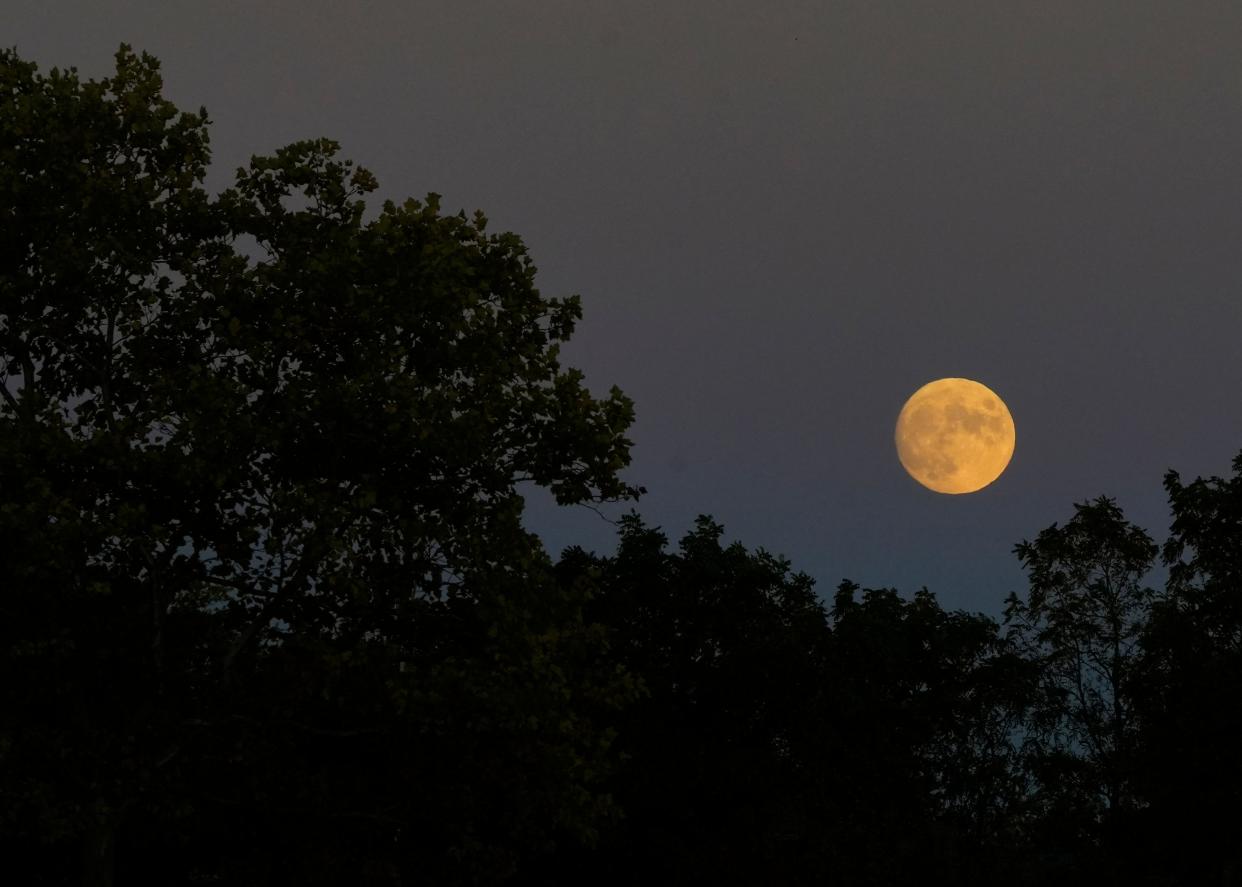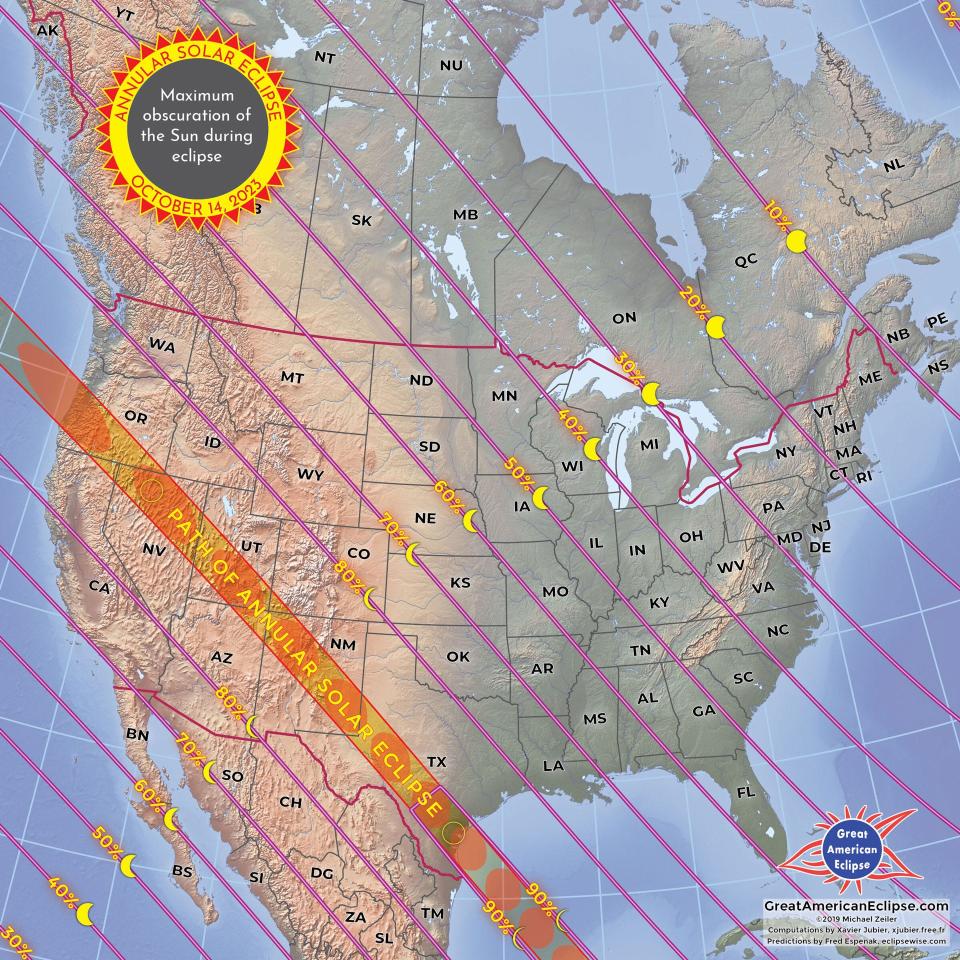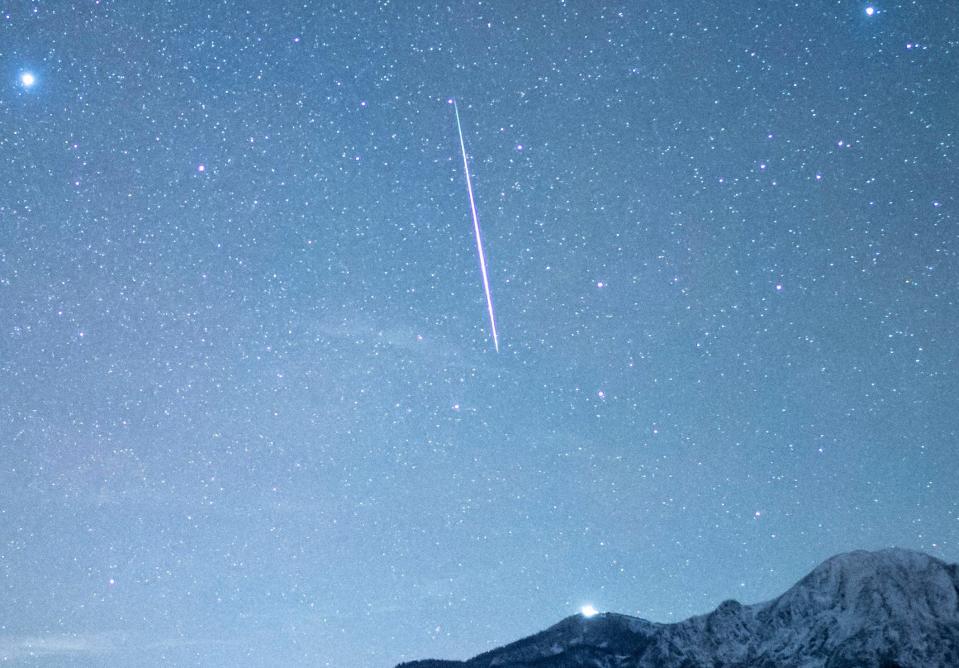Eyes on the sky! 10 astronomical events to look for in 2023, from meteors to supermoons

Expect 2023 to be a bright year for meteor showers and supermoons, throughout central Ohio and beyond.
Several of the meteor showers visible this year will be exposed to less moonlight than in previous years. That means there will be a better chance for visibility (weather permitting, of course), according to Space.com.
Not everything will be an improvement on 2022 for Ohioans, however. While there were two lunar eclipses visible in Ohio last year, this year's lunar eclipse will not be visible in most of the Western Hemisphere, and a rare solar eclipse will only be visible in parts of Asia and the Pacific Ocean.
USA Today: Your guide to meteor shower-watching in 2023
Still, there are plenty of astronomical phenomenon, including a partial annular eclipse, to enjoy throughout Ohio this year. Here are some highlights to add to your calendar now.
April 22-23: Lyrid meteor shower
The Lyrids, which peak in 2023 on the nights of April 22-23, have been observed for more than 2,700 years, making them one of the oldest-known showers, according to USA TODAY.
Lyrids are pieces of debris from Comet C/1861 G1 Thatcher. In mid-April of each year, Earth runs into the stream of debris from the comet, which causes the meteor shower.
The Lyrids are known for their fast and bright meteors. Although they are not as fast or as plentiful as the famous Perseids in August, they still can leave trails that remain for a few moments.
May 5-7: Eta Aquarid meteor shower
The Eta Aquarid shower is one of two meteor showers that come from the debris trail of the famed Halley's Comet.
In 2023, the most frequent Eta Aquariid meteors should rain down in the hour or two before dawn May 5-7, according to EarthSky. The full moon will rise on May 5, obscuring the meteor shower.
The broad peak to this shower – from April 15 to May 27 – means that some meteors may fly for a few days before and after the predicted optimal date.
Aug. 1: ‘Sturgeon supermoon’
The second-largest supermoon of the year will be in the evening of Aug. 1, during the second full moon of summer. Last year, the Sturgeon supermoon was the largest in the night sky. A "supermoon" is one that appears larger in our night sky because of its closer position to Earth. The moon will also appear larger on July 31, according to Forbes.
Aug. 12-13: Perseid meteor shower
One of the best-viewed meteor showers in the Northern Hemisphere, the Perseids are known for their consistent and abundant meteors, which will peak on the night of Aug. 12-13.
The best Perseid performance on record occurred in 1993, when the peak rate topped out at 300 meteors an hour.
Aug. 27: Saturn in opposition
In 2023, Saturn is at opposition to the sun on Aug 27, making it exceptionally visible before dawn, according to Cambridge University.
For those with telescopes, this will be their last year to view Saturn’s rings until 2027 due the elliptical courses of the two planets.
Aug. 30-31: ‘Blue supermoon’
On Aug. 30 and 31, the moon will appear its largest size for the year, making it a supermoon. The supermoon also falls on a “blue moon” date, meaning that it is the second full moon of the month, something that occurs once every couple of years.
It will turn full while over 350,000 kilometers from Earth and will look best at moonrise on two successive evenings, Wed., Aug. 30 and Thurs., Aug. 31, according to Forbes.
Oct. 14: Partial solar eclipse throughout central Ohio
This solar eclipse will cross North, Central, and South America. In central Ohio, viewers will be able to see around 40% of the annular eclipse, according to NASA. A full eclipse path will travel from Oregon to Texas.

Oct. 21: Orionid meteor shower
The Orionid meteors also come from the debris trail of Halley's Comet, through which the Earth passes this time of year, and radiate from the Orion constellation (the shower's namesake).
The Orionids are "considered to be one of the most beautiful showers of the year," NASA says, and they're known for brightness and speed – they travel at about 148,000 mph. "Fast meteors can leave glowing 'trains' (incandescent bits of debris in the wake of the meteor) which last for several seconds to minutes."
The American Meteor Society said this year's Orionid shower will peak Oct. 20-21.
Oct. 23: Venus bright in the sky
Just at sunrise on Oct. 23, Venus will be at its longest elongation — when Venus will be farthest from the sun in the morning sky — making it the third brightest object in the sky, according to EarthSky. It will also be brightest just at sunset.
Because Venus is closer to the sun than Earth, its appearance in the night sky is tied to the movement of the sun. At the October 2023 greatest elongation, Venus will appear higher in the sky from the Northern Hemisphere than from the Southern Hemisphere, according to EarthSky.
Dec. 14: Geminid meteor shower
The Geminid meteor shower is another annual shower that will be visible from Columbus from Dec. 4 to Dec. 17, with peak activity on Dec. 14. An asteroid known as 3200 Phaethon, which appeared in the mid-1800s, is responsible for the Geminid meteor shower.
The shower will not be visible from Columbus before around 6:13 p.m. each night, when its radiant point rises above the eastern horizon. It will then remain active until dawn breaks around 7:12 a.m.
The shower will produce its best displays in the hours around 2 a.m., when its radiant point is highest in the sky. As many as 120 meteors per hour may be seen at its peak.

@Colebehr_report
Cbehrens@dispatch.com
This article originally appeared on The Columbus Dispatch: 10 astronomical events in 2023 to keep your eyes on in Columbus

